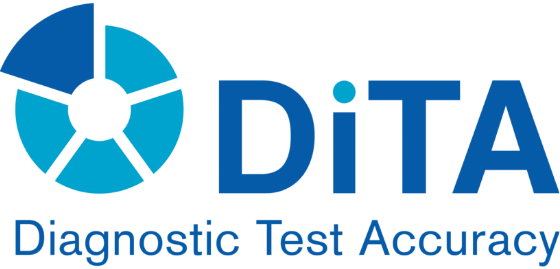Use the Back button in your browser to see the other results of your search or to select another record.
Evaluation of clinical tests to diagnose iliopsoas tendinopathy
Vandeputte FJ, Driesen R, Timmermans A, Corten K
Clin Orthop Relat Res 2025 May;Epub ahead of print
primary study
BACKGROUND: Diagnosing iliopsoas tendinopathy is challenging because of nonspecific pain patterns and clinical signs overlapping with those of other hip conditions. Although peritendinous anesthetic injections provide the best diagnostic accuracy, they are invasive and resource intensive. Conventional clinical tests largely focus on hip flexion, potentially overlooking the diagnostic contribution of the muscle's secondary function-external rotation. A newly described hip-external rotation-flexion-ceiling (HEC) test combines the primary function (hip flexion) with the secondary function (external rotation) of the iliopsoas, potentially offering enhanced diagnostic reliability. QUESTIONS/PURPOSES: This study aimed to (1) determine the diagnostic accuracy of the HEC test and 10 conventional physical examination tests for iliopsoas-related groin pain; (2) detect "good" and "poor" tests for diagnosing iliopsoas tendinopathy based on three diagnostic performance criteria before and after anesthetic injection (mean pain reduction, optimal cutoff value for pain reduction, and area under the curve [AUC]); and (3) rank all tests, based on the same criteria, to identify the best diagnostic tool. METHODS: In this retrospective study at a high-volume arthroplasty community hospital, we reviewed 48 consecutive fluoroscopy-guided iliopsoas tendon injections performed for persistent groin pain between October 2023 and May 2024. After excluding four patients without any data on the clinical tests performed, a population of 44 participants (mean age 48 +/- 15 years; 34% male) remained, which included both native hips (52%) and patients who had undergone THA (48%). Eleven clinical tests including the novel HEC test and 10 conventional tests (such as resisted hip flexion seated and straight leg raise [SLR] in neutral and external rotation)-were performed before and after a fluoroscopy-guided iliopsoas injection, with an improvement in their characteristic groin pain serving as the diagnostic gold standard. A test was considered "good" if it met all three criteria: (1) a significant mean VAS pain score reduction of >= 3 points after injection, (2) a significant optimal cutoff value for pain reduction of >= 4, and (3) a significant AUC of >= 0.80. A test meeting none of these three criteria was considered "poor." Using the same three criteria, each clinical test with at least 30 valid observations received a ranking position for each criterion, and these three ranks were summed to produce a total score. The test with the lowest total score was deemed the best, followed by the tests with higher scores. Statistical analysis involved estimating sensitivity, specificity, AUC, and optimal cutoff values using receiver operating characteristic curves and the Youden J statistic. RESULTS: In 82% (36 of 44) of patients who experienced pain reduction after injection and who were diagnosed with iliopsoas tendinopathy, the following tests had the most clinically important pain reduction after infiltration: the HEC test (6.0 +/- 2.1; p < 0.001), resisted hip flexion (seated) (5.1 +/- 1.3; p < 0.001), and SLR in exorotation (4.9 +/- 1.4; p < 0.001). The HEC test demonstrated a sensitivity of 94%, specificity of 88%, and an AUC of 0.99, with a high cutoff (VAS score reduction of 5) outperforming conventional tests. Three tests-including the HEC test, resisted hip flexion (seated), and resisted hip external rotation (seated)-met all three criteria to be classified as "good" tests, whereas the Thomas test, SLR in neutral, and the snapping hip test were deemed "poor" tests. The HEC test was ranked best to detect iliopsoas tendinopathy, followed by the resisted hip flexion (seated), SLR in exorotation, and resisted hip external rotation (seated). CONCLUSION: The HEC test is an accurate diagnostic maneuver for iliopsoas tendinopathy offering improved sensitivity and specificity compared with conventional tests. Surgeons should consider incorporating the HEC test into routine evaluations of patients with groin pain to enhance diagnostic precision and optimize treatment strategies. Future studies should focus on interobserver reliability and assess the test's performance across diverse patient populations. LEVEL OF EVIDENCE: Level III, diagnostic study.
For more information on this journal, please visit http://www.lww.com.
Full text (sometimes free) may be available at these link(s): ![]() help
help


